
SendGrid vs Mailgun: Which Platform Is Better? [2025]
When it comes to sending transactional emails at scale, SendGrid and Mailgun are two popular options due to their powerful infrastructure, reliability, and speed. But choosing the right one for your business isn’t just about sending emails. It’s about support, flexibility, pricing, and long-term value.
In this comparison, we break down SendGrid vs Mailgun, examining their features, pros and cons, and pricing models to help you decide which solution fits your needs best.
Looking for an affordable yet powerful transactional API?
Deliver important transactional messages quickly and reliably.
Try MoosendSendGrid vs Mailgun: Quick Comparison
Here’s a quick overview of the two platforms:
- SendGrid is great for businesses looking to deliver transactional emails while taking advantage of its other marketing tools.
- Mailgun is ideal for users with technical knowledge looking for a powerful yet flexible solution to send transactional emails reliably.
| SendGrid | Mailgun | |
| Free plan | 60-day free trial (100 emails/day) | Yes (100 emails/day) |
| Pricing | $19.95/month (50,000 emails) | $15/month (10,000 emails) |
| Ease of use | Easy | More complex |
| Email editor | Visual + Code editor | Visual + Code editor |
| Templates | Yes | Yes |
| Spam testing | Yes | Yes |
| Other testing tools | Email preview, link validation | Email preview, link validation |
| Analytics | Detailed | Detailed |
| Email validation | Yes | Yes |
| Deliverability | 4/5 | 4.5/5 |
| Integrations | 130 | 66 |
| Customer support | 3,5/5 | 4/5 |
Now let’s see more details about each category.
Setup & Ease of Use
SendGrid:
After logging into your SendGrid account, you’ll find a clean and well-guided onboarding process, particularly for domain authentication. The platform provides straightforward guidelines and the UI takes very little time to get used to.
While this process involves modifying DNS records (like SPF, DKIM, and potentially a return path), SendGrid provides step-by-step instructions, making it manageable even for those without advanced technical skills.
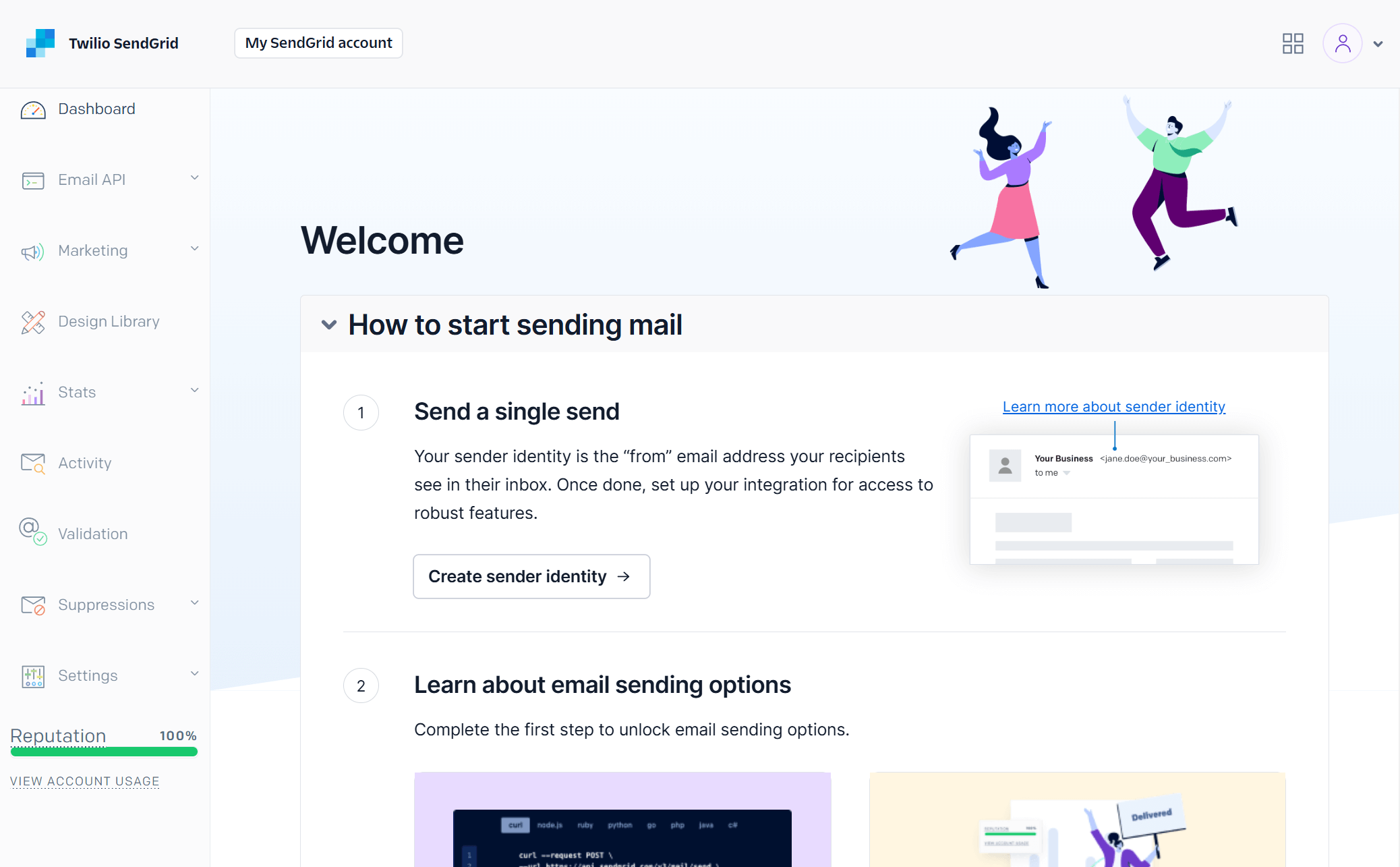
You’ll also notice that you have all the tools in one place, which is great. Overall, the dashboard is intuitive, with clear sections for templates, statistics, and email activity.
Apart from our own experience, we also found that SendGrid is praised on user review sites as being accessible and developer-friendly.
Mailgun:
Mailgun has a similar onboarding process that helps you get started in six steps. The interface is clean and modern, and everything is well-organized. To help you out, the platform includes video tutorials for every step you take as well as useful links to its help center.
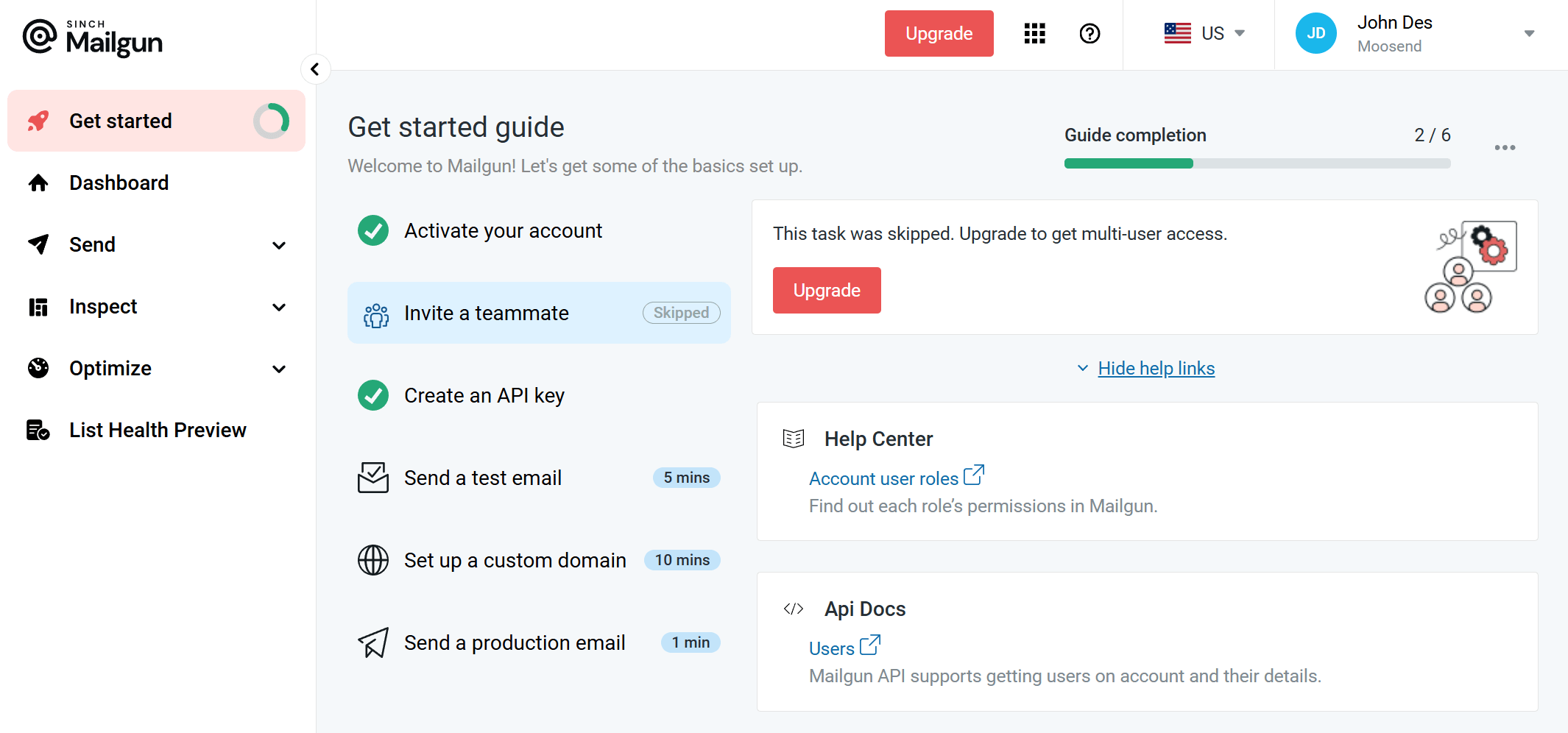
Beginners may feel less “comfortable” than with SendGrid, since the process is more manual.
Nevertheless, this transactional email service seems to have made significant improvements compared to what it used to be.
Winner: SendGrid. Overall, it has a smoother onboarding with fewer manual steps and helpful visual tools that make setup faster and easier.
Email Design
SendGrid:
SendGrid lets you create your transactional email campaigns in two ways:
- via a visual drag-and-drop design editor
- or a code editor with Handlebars syntax
SendGrid’s approach to email design makes it accessible for both marketers and developers. Developers can dive into raw HTML, while non-technical users can build templates using prebuilt blocks.
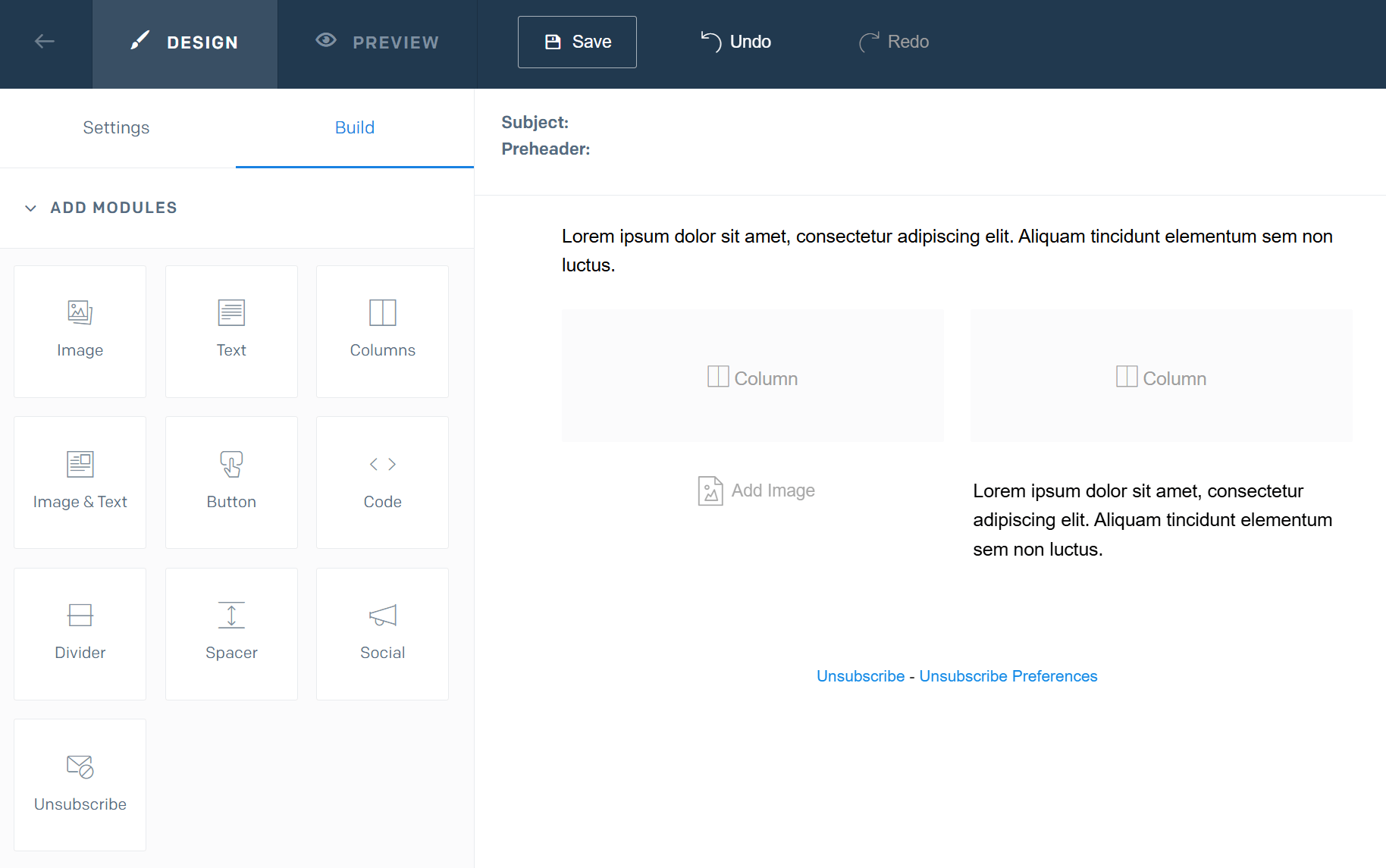
Among others, you can insert images, text, buttons, and custom code into your campaigns. The platform has built-in version control for templates, which is helpful when testing different layouts.
You can also easily personalize emails by adding dynamic fields like the recipient’s name or order number, without complex coding required.
Finally, with the preview tool, you can see how your email will be displayed on desktop and mobile devices.
Mailgun:
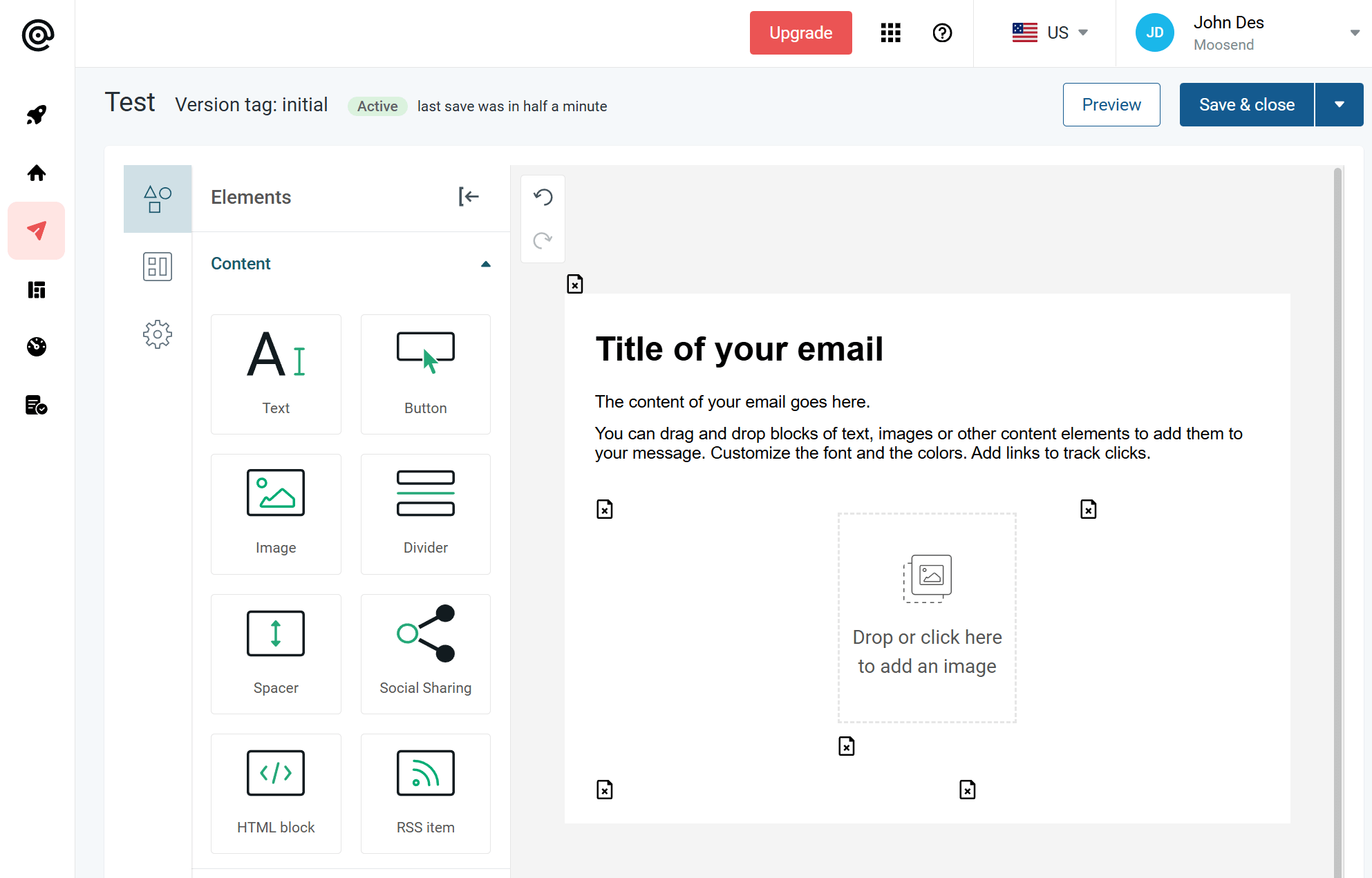
Similar to SendGrid, Mailgun offers a responsive drag-and-drop template builder for transactional emails. You can visually design layouts by placing elements like headers, text blocks, images, buttons, and RSS items.
More advanced users can also jump into the HTML editor with Handlebars variables and make changes as they need.
Like SendGrid, Mailgun supports template storage, versioning, and duplication. Finally, you can preview whether your campaign renders properly on desktop, tablet, and mobile devices.
Winner: SendGrid. Both editors are intuitive, but SendGrid provides more personalization options.
Templates
SendGrid:
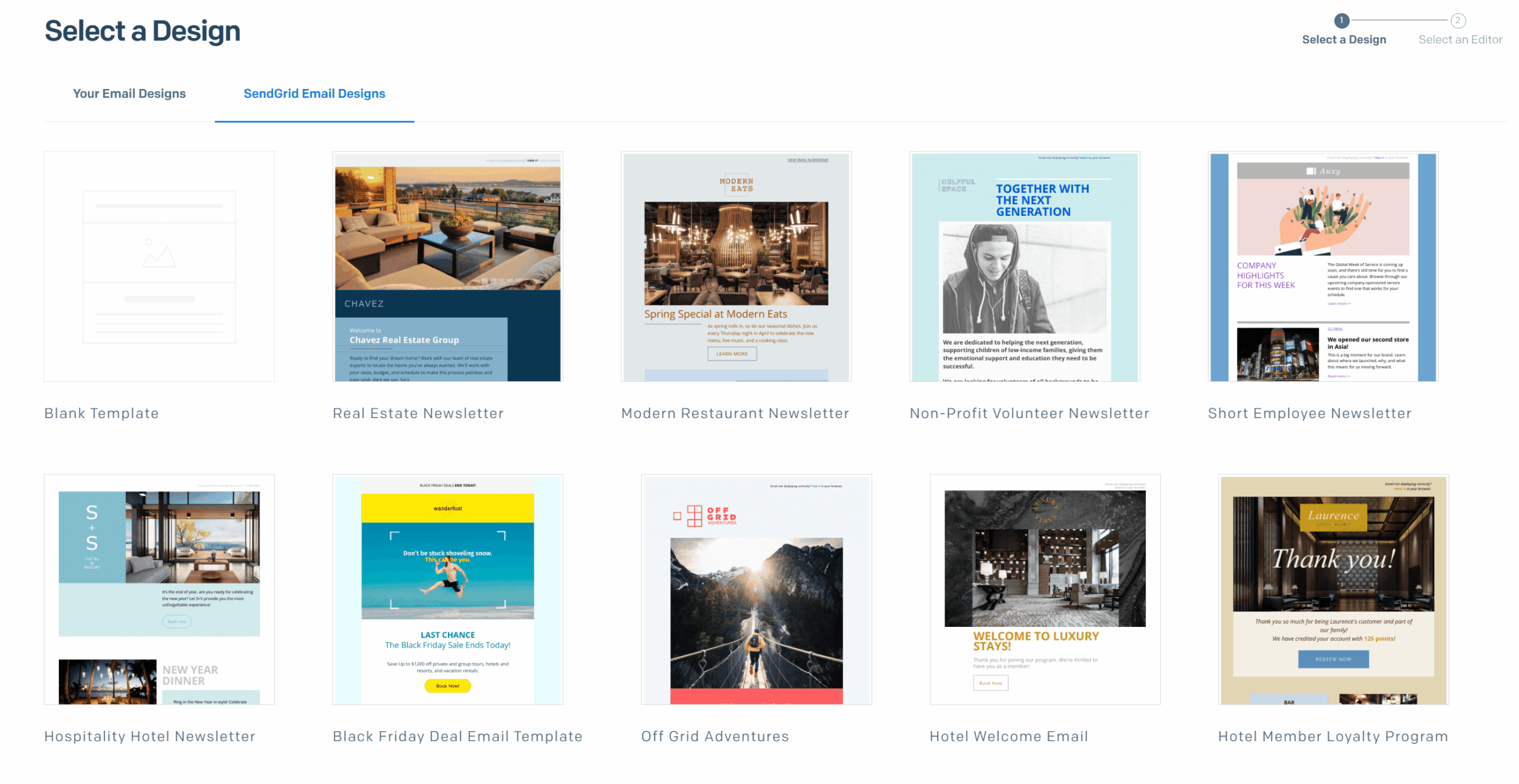
SendGrid provides a decent library of pre-built transactional templates. There are starter layouts for common use cases like:
- password resets
- order confirmations
- account notifications
These templates are fully customizable using the drag-and-drop or HTML editor. While limited in quantity, they’re flexible, responsive, and easy to personalize with dynamic content.
Mailgun:
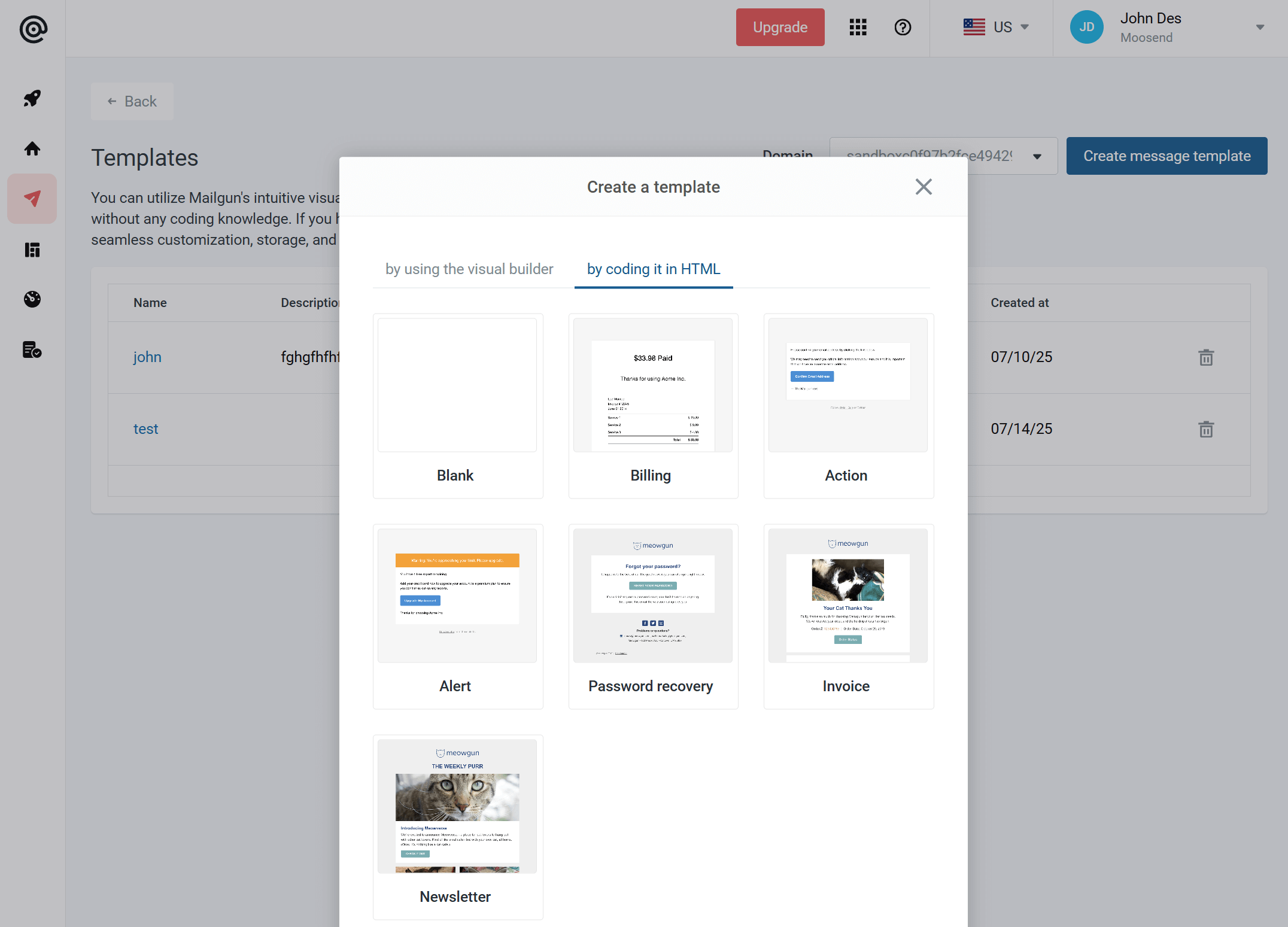
Mailgun provides several pre-made templates that can be customized either through the visual editor or the HTML editor. The library includes basic transactional email types (e.g., welcome messages, alerts), and they’re all responsive by default.
We noticed that Mailgun’s templates focus on having a clean structure rather than design-heavy components. This could be due to the fact that most users build from scratch or import custom HTML templates using external tools like MJML.
Winner: SendGrid wins this one thanks to its advanced template tools and responsive editing experience.
Email Testing Features
SendGrid:
SendGrid has several email testing features to test your emails before sending them to your recipients. These can be found inside the transactional email template editor.
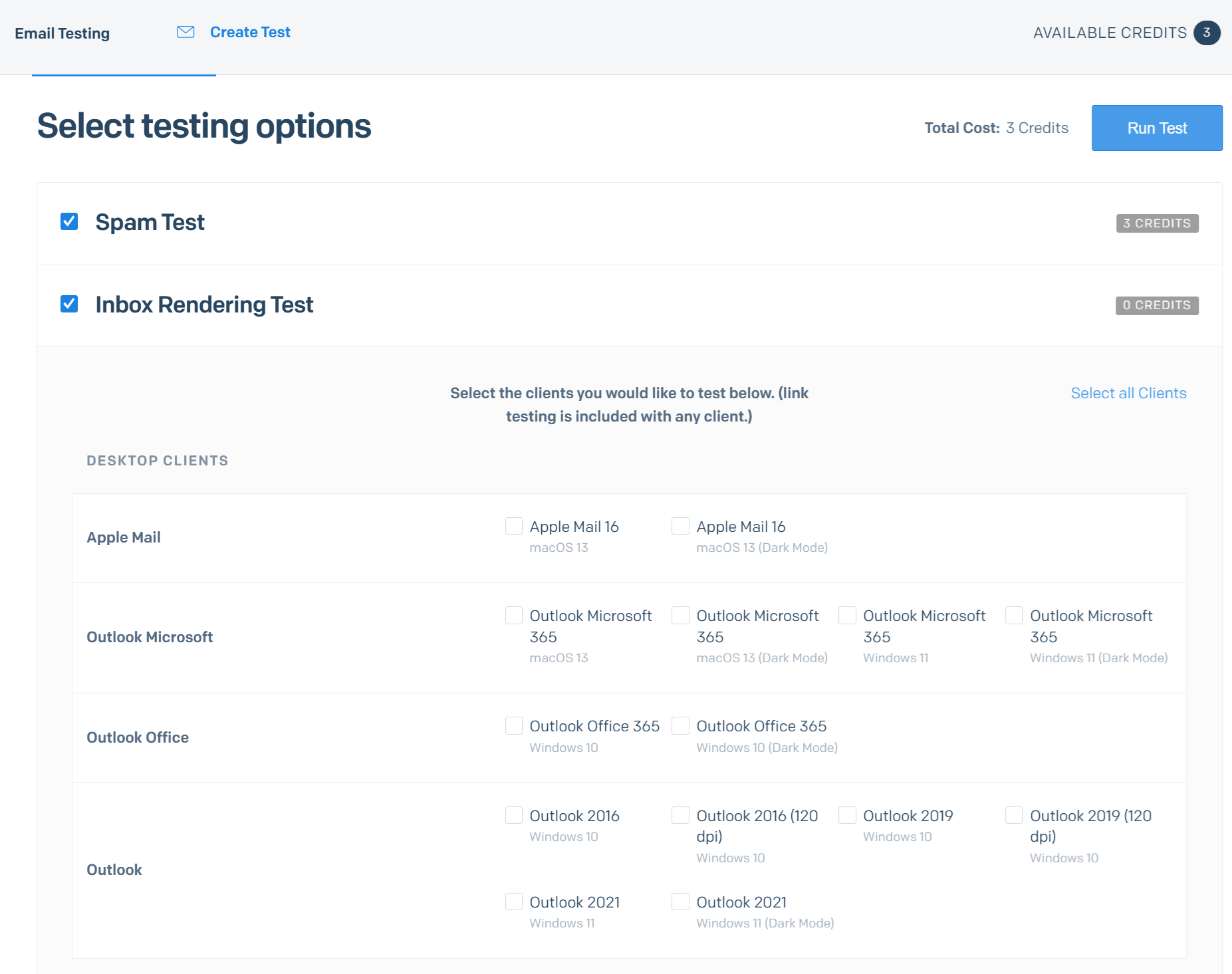
For starters, you can run a spam test to see how your email performs against popular spam filters.
With an inbox rendering test, you’ll be able to check how your emails are rendered across various inbox providers and devices.
Additionally, the platform lets you populate Handlebars variables with sample data to preview dynamic content.
With SendGrid, you’ll also be able to validate all links within your email to ensure they work properly.
The only downside here is that you have a limited number of credits to conduct your tests. If you run out, buying new credits can be expensive as 100 credits cost $40.
Mailgun:
In Mailgun, you can find testing options in the Inspect and Optimize tabs on your dashboard. Specifically, the platform can identify broken or malicious URLs in your email content.

What’s more, it monitors redirect chains, HTTP status, SSL certificate issues, and content properties.
The platform also includes a Sandbox Mode. With this, you can safely test email sending via a test domain (sandboxXXX.mailgun.org) without affecting real users.
More advanced users will appreciate Mailgun’s webhook testing, which helps you monitor and respond to real-time email events (e.g., an email is delivered, a link is clicked). This way, you can make sure your app handles your emails correctly before going live.
Finally, Mailgun can validate email addresses, thus improving your email deliverability and protecting your domain reputation.
Winner: Mailgun. Mailgun’s Inspect tools provide a more comprehensive pre-send suite, checking everything from link health to image rendering and accessibility.
Analytics
SendGrid:
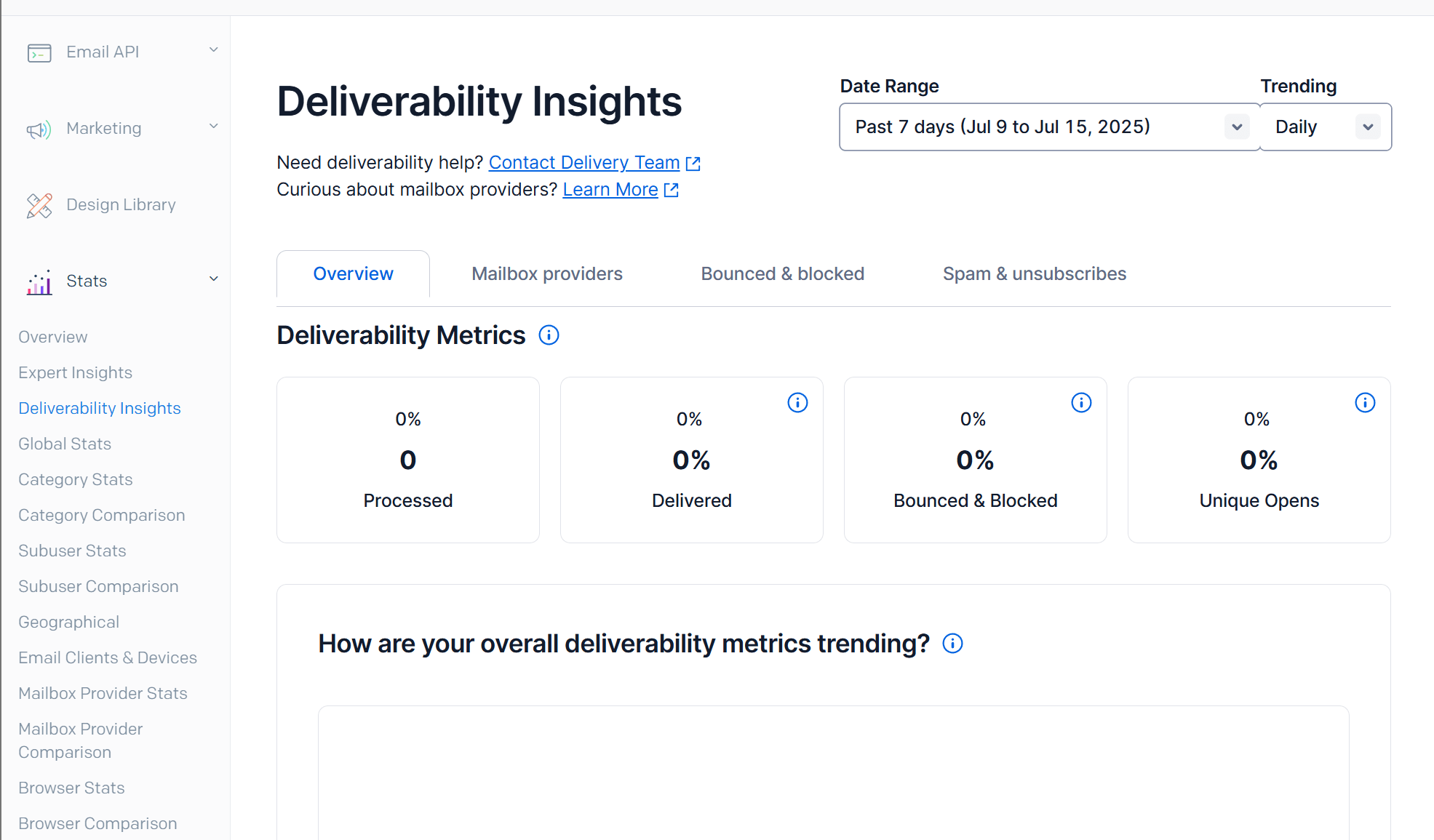
Testing SendGrid’s platform, we found that it offers a visual analytics dashboard with key insights about your transactional email performance. You can see individual message-level events (delivered, opened, bounced, clicked), as well as how your emails are performing on specific devices, email clients, in specific areas, etc.
You can also group and compare different transactional flows (e.g., your password resets vs. shipping alerts).
Overall, the UI is clean and accessible, providing detailed, real-time information.
Mailgun:
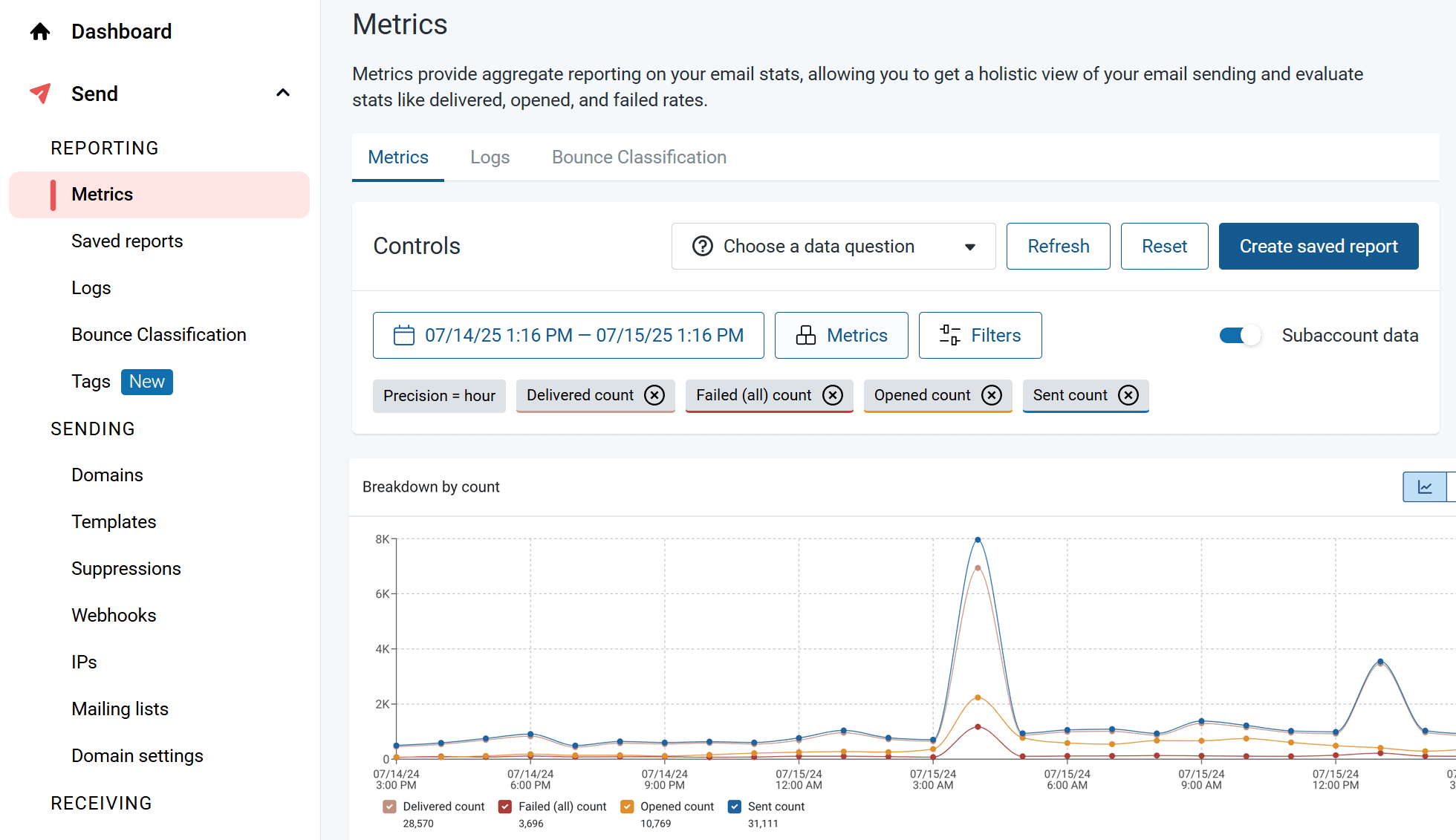
Mailgun offers equally robust reporting and analytics. You get highly detailed event logs that track every stage of a transactional email’s lifecycle, such as when it’s accepted, delivered, opened, clicked, or bounced.
These logs are searchable and filterable within the Mailgun dashboard and are also fully accessible via their API, allowing teams to build custom dashboards.
For developers, Mailgun’s webhook-driven reporting is especially powerful. You can set it up to send real-time data, like opens, clicks, or delivery failures, straight to your app or system. This makes it easy to trigger alerts or automate actions based on what happens with your emails.
Mailgun also supports custom tagging, so you can label different types of transactional messages (e.g., “invoice,” “login alert,” “onboarding”) and filter based on those tags.
Overall, Mailgun’s analytics are ideal for teams that want direct access to raw email data and are comfortable working with APIs.
Winner: Tie.
SendGrid vs Mailgun: Email Deliverability
Among the key things you need to look at when searching for a new ESP or transactional API is email deliverability. Password resets, purchase confirmations, and account alerts need to arrive instantly and reliably. A delay or a message caught in spam can disrupt the user experience and trust.
Email deliverability represents the rate at which your emails land in your recipients’ inboxes. Let’s see how the two competitors fare against each other.

As you can see, Mailgun delivers nearly 4% more emails directly to the recipient’s inbox compared to SendGrid. That can be a meaningful difference for high-volume senders.
What’s more, SendGrid has a higher percentage of messages ending up in spam folders. This could hurt engagement and user trust. Finally, SendGrid has a slightly higher email loss rate (emails that never reached the recipient at all).
While both services offer great deliverability rates, Mailgun outperformed SendGrid in all three deliverability categories. So, if maximum deliverability is your top priority, Mailgun has the edge.
Nevertheless, both platforms offer tools to improve your results (like domain authentication, dedicated IPs, and deliverability consulting), so your performance will also depend on how well you configure and monitor your setup.
Winner: Mailgun.
SendGrid vs Mailgun: Integrations
In the context of transactional emails, integrations are less critical than in marketing email platforms. Nevertheless, let’s see what each service offers and how easily it can be integrated into other apps and services (with developer knowledge).
SendGrid:
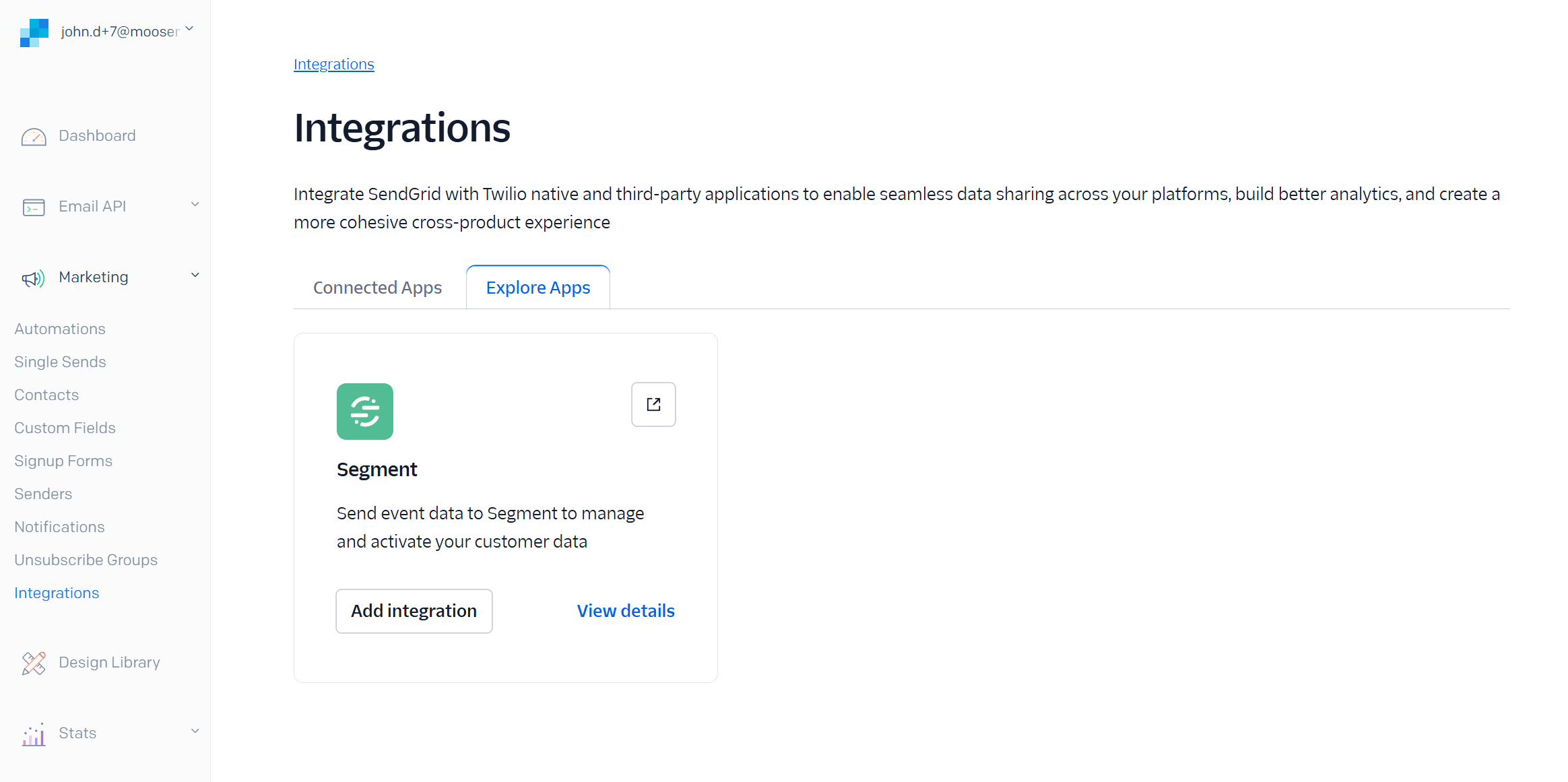
SendGrid offers a decent number of integrations with third-party apps (we found 130).
Apart from that, it offers:
- Well-documented RESTful Email API
- SDKs for Node.js, Python, Ruby, Go, Java, C#, and PHP
- Integration guides for Heroku, Firebase, WordPress, Laravel, and more
- Support for SMTP relay for apps that don’t use REST APIs
- Additional features like Template API, event webhooks, and category/tag filtering
The integration experience is streamlined, with clear docs, test environments, and sandbox modes. SendGrid is often praised for being easy to plug into modern stacks.
Mailgun:

Mailgun, on the other hand, has fewer native integrations available, specifically 66 in number. These include CRM platforms, eCommerce, CMS, and contact management tools.
Apart from them, it offers:
It offers:
- High-performance RESTful API
- SDKs for Python, PHP, Ruby, Java, Go, Node.js, and C#
- Guides for integrating with Django, Flask, Laravel, and other common backend frameworks
- Support for SMTP as an alternative to the API
- Powerful webhooks and logs for real-time event handling
- Tagging and routing features for custom flows
Overall, Mailgun has a clean and minimal API, ideal for teams seeking control and performance.
Before announcing the winner, let’s see a more technical comparison table:
| Feature | SendGrid | Mailgun |
| Official SDKs | Java, Python, Node.js, PHP, Ruby, C#, Go, Java | Python, Node.js, Go, PHP, Java, Ruby |
| API rate limits | 600 requests/minute | 300 requests/minute |
| Webhooks | /v3/user/webhooks/ | v3/domains/<domain>/webhooks |
| Events | /v3/user/webhooks/event | v3/<domain>/events |
Winner: It’s a tie, depending on your needs. SendGrid has a faster setup, while Mailgun offers deeper customization for complex systems.
SendGrid vs Mailgun: Customer Support
SendGrid:
The platform offers different levels of customer support based on the user’s plan.
Free plan users rely primarily on self-help resources like documentation, public tutorials, and community forums. They can also receive support via ticket, but there are no guaranteed response times (as is the case with paid plans).
As for the paid plans, all of them include ticket and chat support, with guaranteed response times. Higher tiers (e.g., Pro, Premier) unlock 24/7 support, priority SLAs, and access to dedicated support engineers. Note that response times for your inquiries depend on your pricing plan.
Finally, you can purchase expert consulting to optimize your transactional setup.
Mailgun:
Moving on to Mailgun, things are similar for free plan users. You get access to the knowledge center, documentation, and customer feedback forum, while you can also access ticket support.
For the Basic and Foundation plans, you get the same support as the free plan. To access live chat and phone support, you’ll need to be on the highest-tier Scale plan.
Dedicated deliverability consulting is available via paid consulting packages.
Winner: Tie.
SendGrid vs Mailgun: Pricing
Now let’s compare the pricing structure of the two competitors.
SendGrid:
SendGrid’s pricing structure consists of a free trial and three paid plans.
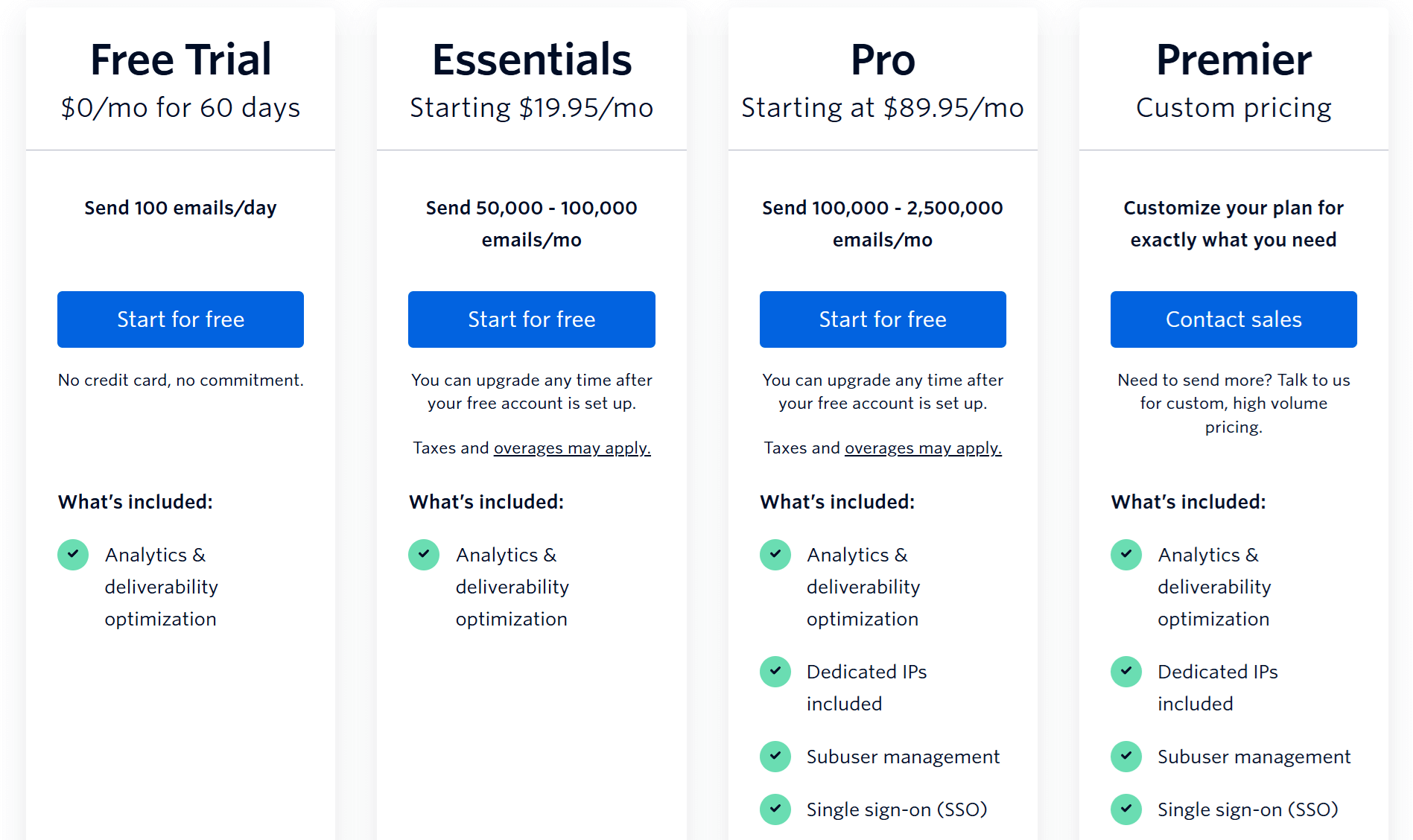
The free trial lasts for 60 days and allows you to send 100 emails per day. You get basic analytics, API/SMTP access, one teammate, and one webhook.
The first paid plan, the Essentials plan, starts at $19.95/month and offers 50K emails/month, deliverability tools, two webhooks but no dedicated IP.
The Pro plan adds a dedicated IP, subuser support, 7-day log retention, priority support, and email validations. The starting price is $89.95/month.
Finally, the Premier plan is aimed at high-volume senders and comes with custom pricing and enterprise support.
Mailgun:
Mailgun’s pricing follows a similar structure, although the available features differ based on your plan.
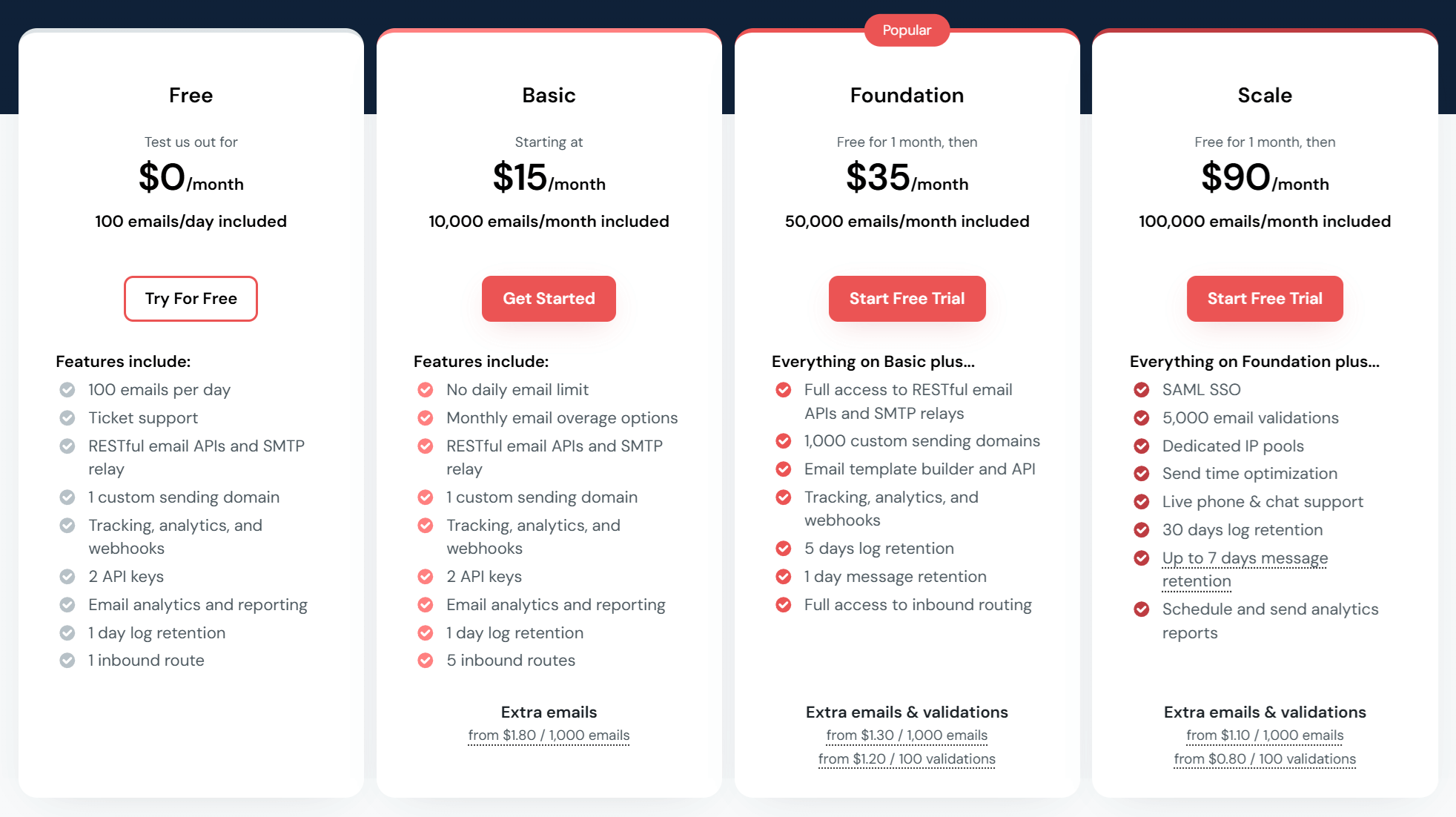
Starting with the free plan, it lets you send 100 emails per day, giving you access to the REST API, SMTP, analytics, webhooks, and ticket support.
The Basic plan starts at $15/month and lets you send 10K emails per month, removing daily limits. It also provides flexibility since you can send more emails by paying overage fees (from $1.80/1000 emails), without upgrading to another plan.
The Foundation plan starts at $35/month, unlocking the email template builder, 5-day log retention, and inbound routing.
Mailgun’s top-tier Scale plan adds the platform’s most advanced features, including send time optimization, dedicated IPs, and phone/chat support. It starts at $90/month with 100K emails included.
So, which platform is more affordable?
- For small to medium volumes (≤50K/mo), SendGrid is significantly cheaper.
- For mid volumes (50K–100K/mo), costs are similar at around $90/month. Our advice is to choose based on the features you need.
- High volume senders (>100K/mo) should compare add-ons (e.g., validations, deliverability tools) and decide accordingly.
Winner: SendGrid.
Top SendGrid and Mailgun Alternatives
If you’re unsure about Mailgun and SendGrid or you want to explore more alternative options, here are the top solutions.
1. Moosend
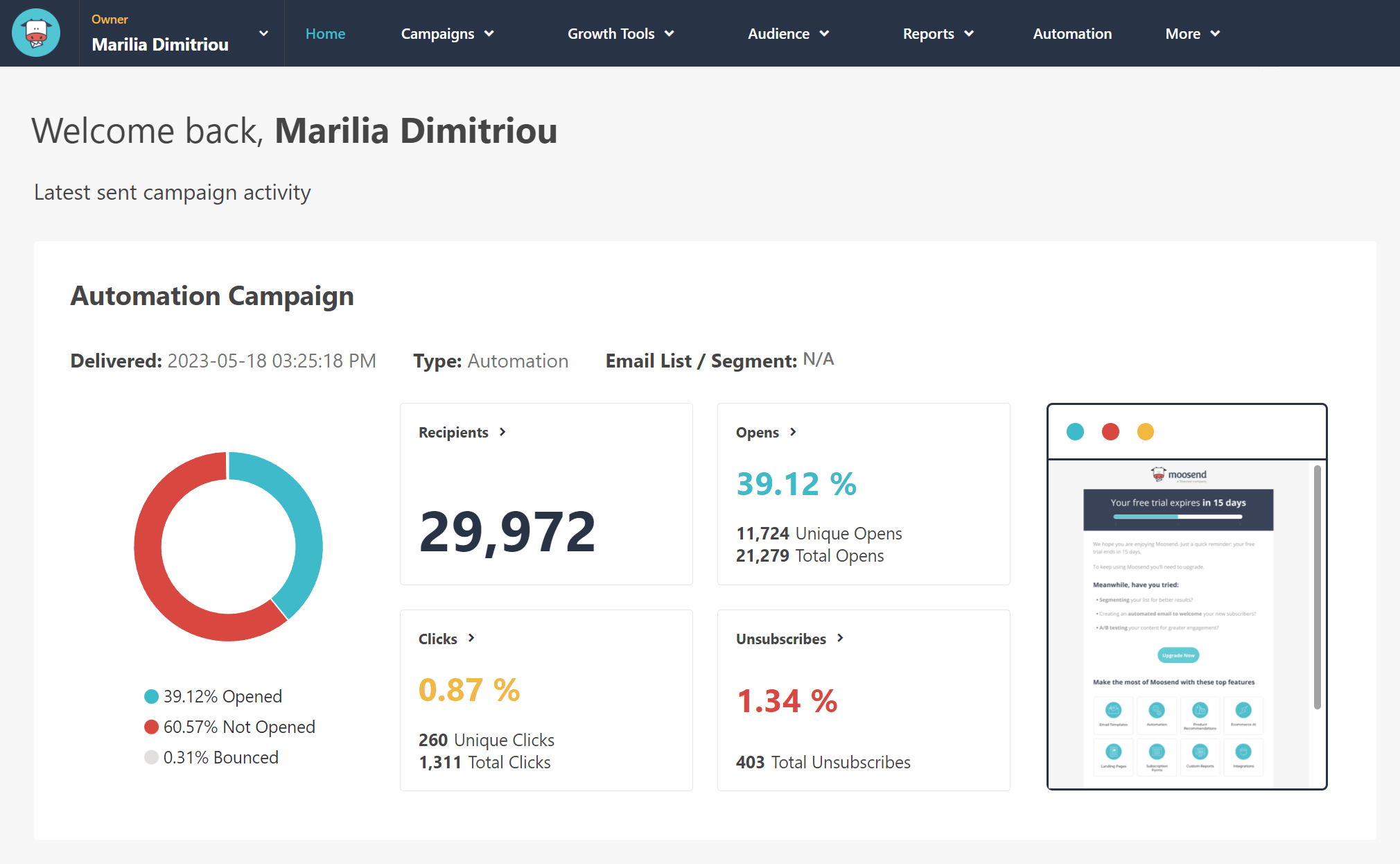
Pricing: Paid plans start at $9/month, 30-day free trial (Sign up here)
Moosend is among the best email marketing services known for its affordable pricing and responsive customer support. It offers a robust API while being capable of handling both your transactional and marketing email messages. With Moosend, developers can integrate transactional emails using RESTful API or SMTP with minimal setup time. It also provides real-time tracking, high deliverability, and detailed reporting that’s easy to understand. All these make the platform a great choice for small businesses or startups that need simplicity without sacrificing power.
Whether you want to send password resets, purchase confirmations, or shipping notifications, Moosend provides automation tools and template management to ensure consistency and branding. It’s especially appealing for teams that want all-in-one functionality under a cost-effective plan.
2. Amazon SES
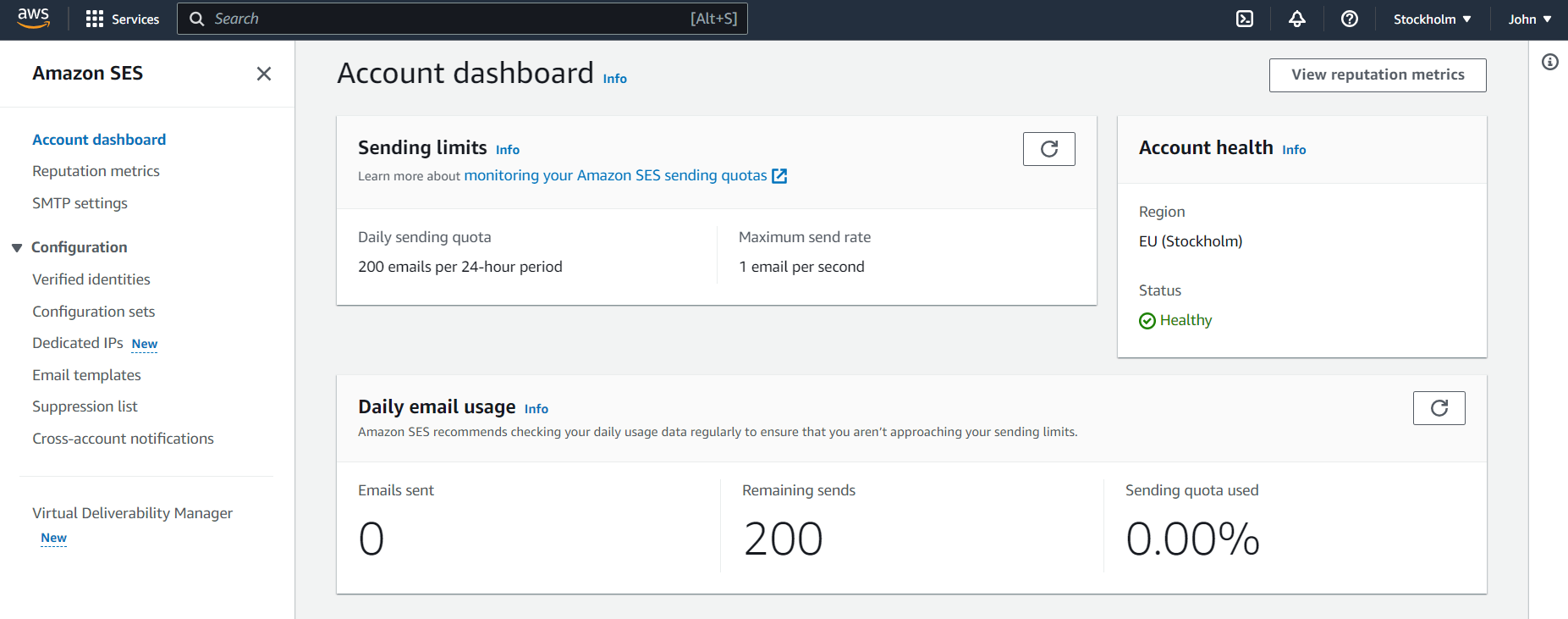
Pricing: Pay-as-you-go ($0.10/1,000 emails), free tier for EC2 users
Amazon Simple Email Service (SES) is a cloud-based email platform built for high-volume senders. It’s one of the most cost-effective options, especially if you’re already using AWS infrastructure. Designed primarily for developers, SES offers full support for SMTP and RESTful APIs, with granular control over sending, deliverability, and reputation management. While it doesn’t come with a native visual editor or UI-driven campaign management, it shines in scalability and raw sending power. Deliverability is great and it supports features like domain authentication (SPF, DKIM), dedicated IPs, and event tracking.
If your team is comfortable managing infrastructure and wants maximum control at minimal cost, Amazon SES is a strong transactional email contender.
3. Brevo (formerly Sendinblue)
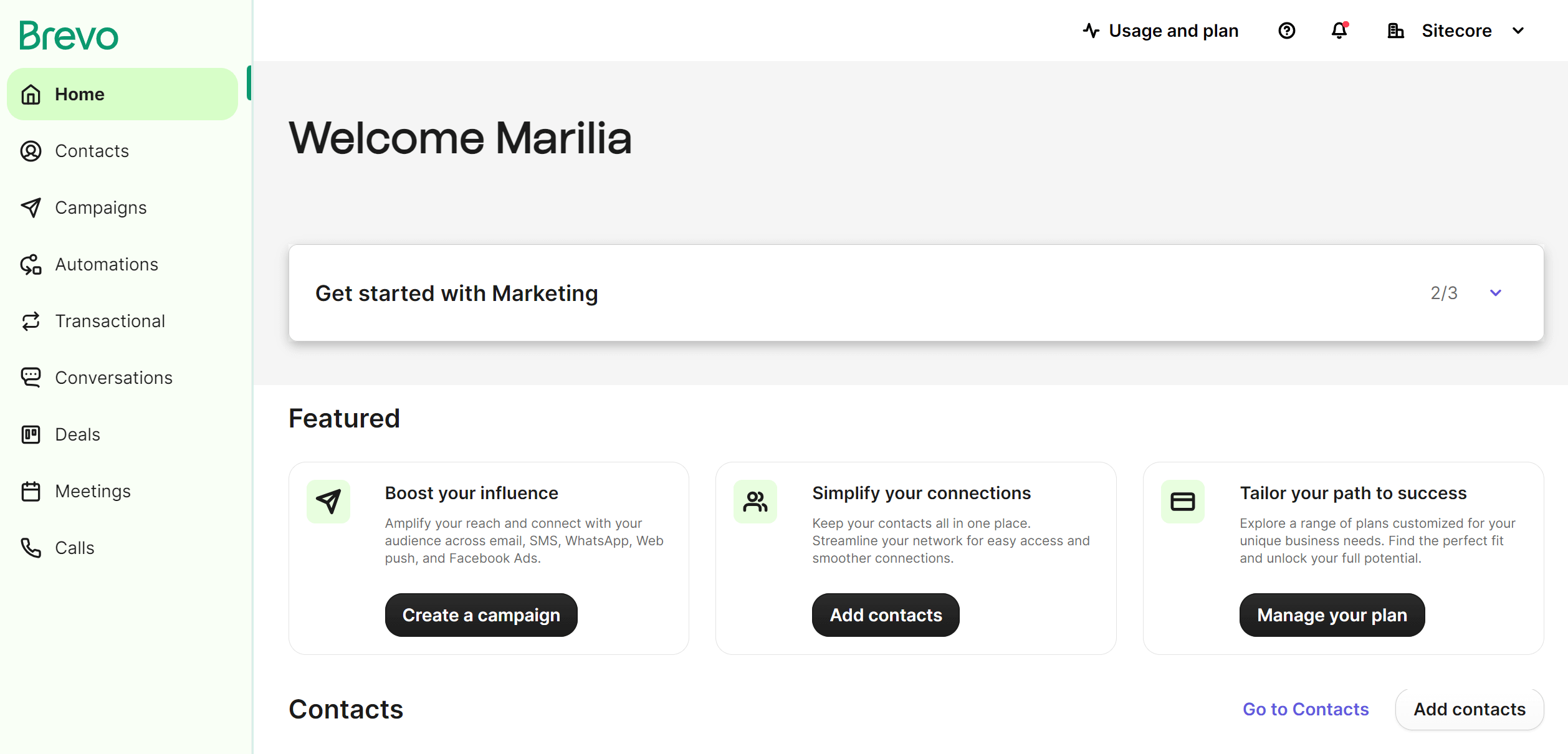
Pricing: Paid plans start at $9/month, free plan
Brevo offers a flexible platform that combines marketing automation and transactional email under one roof. It provides a reliable transactional email API (via SMTP or HTTP) and is designed for both technical and non-technical users. With Brevo, you can trigger real-time transactional messages like order updates, password resets, and alerts from an intuitive dashboard or directly via API. Its standout features include drag-and-drop email design tools, real-time analytics, and support for dedicated IPs and deliverability monitoring.
For businesses looking for a user-friendly solution that supports both marketing and transactional email, Brevo is a choice worth considering.
Additional Resources to Check
Here are a few resources to expand your reading:
- Mailgun alternatives
- SendGrid alternatives
- Mailchimp alternatives
- Enterprise email marketing software
SendGrid vs Mailgun: The Takeaway
When choosing between SendGrid and Mailgun, the best option depends on your team’s needs, technical resources, and long-term goals.
Choose SendGrid if you want a more user-friendly platform, a robust visual email editor, and detailed analytics out of the box. It’s ideal for teams that need a mix of developer tools and accessible design features, especially if email design and testing are part of your workflow.
Go with Mailgun if your team is more developer-focused and you prioritize flexible APIs and detailed event logs. Mailgun also shines when you need granular deliverability control and scalable infrastructure with solid performance.
And if neither quite fits, you can explore alternatives like Moosend (create your free account), Amazon SES, or Brevo, which may suit your budget, use case, or user experience preferences better.
Frequently Asked Questions (FAQs)
Here are some frequently asked questions and their answers.
1. Is Mailgun better than SendGrid?
Mailgun is better than SendGrid if you’re looking for high customization, detailed logs, and powerful APIs. Additionally, it prioritizes event-based webhooks, email parsing, and infrastructure-level email control. SendGrid, on the other hand, offers better design tools and more affordable pricing for low-volume senders.
2. Is Mailgun worth it?
Mailgun is absolutely worth it for technical teams who want control, speed, and scalability for their transactional email needs. It allows bulk email sending at high volumes with great deliverability.




 Published by
Published by
